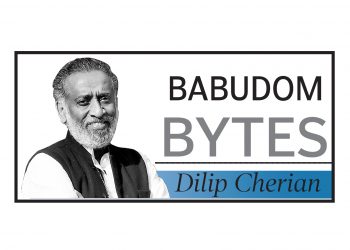The Union Cabinet’s new Unified Pension Scheme (UPS) has set tongues wagging. Touted as a clever blend of the Old Pension Scheme (OPS) and the National Pension System (NPS), it’s worth asking—does it bring anything new to the table, or is it just a repackaged version of old, problematic ideas?
Under UPS, government employees get a guaranteed pension—half their average basic pay from their last 12 months of service. Employees and the government both chip into a pension corpus, with the government’s share rising from 14per cent to 18.5 per cent. Sounds generous, right? But that contribution bump is projected to cost an extra Rs 6,250 crore in the first year alone! And if the government’s assumptions about investment returns don’t pan out, guess who’s on the hook?
Taxpayers. While UPS does bring some structure by requiring monthly contributions, for many observers, it feels like a step back in terms of fiscal prudence. It reintroduces the same risk that the 2004 reforms were designed to avoid: a budget that could buckle under the pressure of covering pension shortfalls. Employees are divided on this. Several staff associations contend that both NPS and UPS are inadequate compared to the traditional OPS, which they prefer to have reinstated. It’s a no-brainer for them: a guaranteed pension without strings attached is the gold standard.
The big question remains: is UPS truly a step forward, or are we dressing up outdated ideas in shiny new packaging? Either way, it’s taxpayers who’ll be picking up the tab if things go south. Is that a risk we’re ready to take?
Perplexing scenario
The recent game of musical chairs in the Finance Ministry’s top echelons has left many of us scratching our heads, especially with the Union Budget just around the corner.
In the past three months, three different Revenue Secretaries have taken the hot seat—a scenario that’s as perplexing as it is unprecedented. It all began in December with the unexpected appointment of Sanjay Malhotra as RBI Governor. This surprise move left a vacuum in one of the Finance Ministry’s core departments, prompting Economic Affairs Secretary Ajay Seth to take additional charge of the Revenue Department to ensure continuity, especially with the GST Council meeting scheduled December 21. Arunish Chawla was appointed Revenue Secretary, but his tenure lasted less than two weeks before he was moved to DIPAM.
Finally, Tuhin Kanta Pandey has taken over the role, bringing a semblance of stability—for now. While bureaucratic changes are par for the course, such rapid reshuffles in a crucial ministry at such a critical time are anything but normal. The Revenue Secretary is a key player in drafting tax policies and revenue projections, both of which are integral to the Union Budget. Frequent leadership changes not only risk policy inconsistencies but could also impact the strategic direction of fiscal planning. This timing raises important questions: Is this disruption a sign of deeper challenges within the Finance Ministry? Will the frequent handovers affect the cohesion needed for effective budgetary planning? As citizens, we can only hope these reshuffles don’t derail the government’s ability to deliver a thoughtful, stable, and growth-oriented budget. After all, with so much at stake, continuity and clarity in leadership are not just desirable—they’re essential.
Pollution control boards struggling to fill vacancies
Pollution control boards across India are facing a major staffing crisis—less than 10 per cent of positions have been filled, despite the looming deadline to get their act together. The Central Pollution Control Board (CPCB) recently told the National Green Tribunal that, out of 2,228 posts in 12 states and two union territories, only 267 are occupied. Not exactly a stellar performance.
To make matters worse, 16 state boards and six union territories have not even bothered to submit progress reports. It’s almost like they’re waiting for someone to come knock on their door and remind them that pollution control is a thing. The National Green Tribunal had to step in and set a hard deadline of April 30, 2025, for filling these vacancies, except in states like Punjab, Haryana, Delhi, Rajasthan, and Uttar Pradesh. They’re already under the Supreme Court’s watch, so it’s not like anyone’s giving them a free pass. Now, let’s take a look at how the states are doing—spoiler alert: it’s not great. Assam, Punjab, Haryana, and Rajasthan combined have managed to fill only 167 posts. Rajasthan, for example, has filled a whopping 93 out of 395 vacancies.
They’ve also held an exam for junior assistant posts, so there’s maybe some hope on the horizon. Punjab, with 26 out of 234 filled positions, is promising to make appointments soon, but the results for 148 posts are still “pending.” Again, not reassuring. The silver lining? Only Arunachal Pradesh, Nagaland, and Lakshadweep seem to have their pollution control boards fully staffed. Maybe they’ve cracked the code on how to fill vacancies and manage pollution. Go figure.
Dilip Cherian
